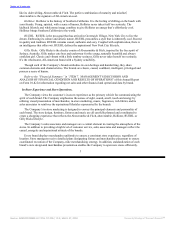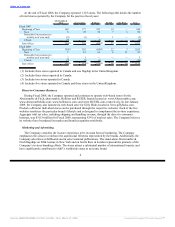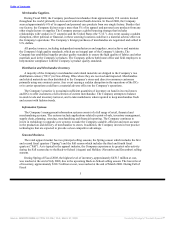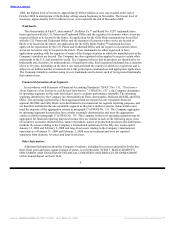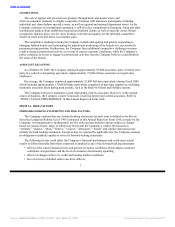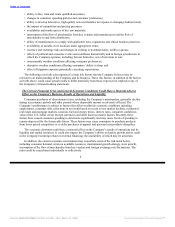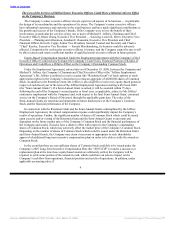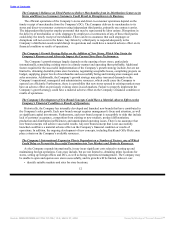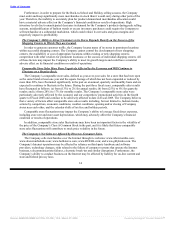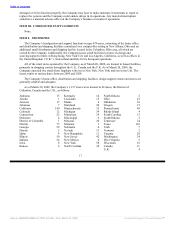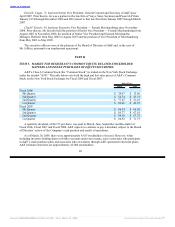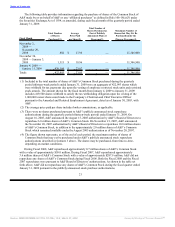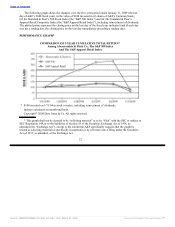Abercrombie & Fitch 2008 Annual Report Download - page 15
Download and view the complete annual report
Please find page 15 of the 2008 Abercrombie & Fitch annual report below. You can navigate through the pages in the report by either clicking on the pages listed below, or by using the keyword search tool below to find specific information within the annual report.
Table of Contents
• negotiate acceptable lease terms;
• hire, train and retain competent store personnel;
• gain acceptance from its foreign customers;
• foster current relationships and develop new relationships with vendors that are capable of
supplying a greater volume of merchandise;
• manage inventory effectively to meet the needs of new and existing stores on a timely basis;
• expand its infrastructure to accommodate growth;
• generate sufficient operating cash flows or secure adequate capital on commercially reasonable
terms to fund its expansion plan;
• manage its foreign currency exchange risks effectively; and
• achieve acceptable operating margins from new stores.
In addition, the Company’s international expansion plan will place increased demands on its
operational, managerial and administrative resources. These increased demands may cause the Company
to operate its business less efficiently, which in turn could cause deterioration in the performance of its
existing stores. Furthermore, the Company’s ability to conduct business in international markets may be
affected by legal, regulatory, political and economic risks. The Company’s international expansion
strategy and success could be adversely impacted by the global economy.
Fluctuations in Foreign Currency Exchange Rates Could Adversely Impact Financial Results.
The Company’s international operations use local currencies as the functional currency. Such foreign
currency transactions are denominated in Euros, Canadian Dollars, Japanese Yen, Danish Krones, Swiss
Francs, Hong Kong Dollars and British Pounds. The Company’s Consolidated Financial Statements are
presented in U.S. dollars. Therefore, the Company must translate revenues, income, expenses, assets and
liabilities from local currencies into U.S. dollars at exchange rates in effect during or at the end of the
reporting period. The fluctuation in the value of the U.S. dollar against other currencies will impact the
Company’s financial results.
In order to mitigate the risk of foreign currency exchange rate exposures, the Company utilizes
foreign currency forward contracts. However, the Company cannot guarantee that fluctuations in foreign
currency exchange rates will not materially affect financial results.
The Company’s Net Sales and Inventory Levels Fluctuate on a Seasonal Basis, Causing its Results of
Operations to be Particularly Susceptible to Changes in Back-to-School and Holiday Shopping
Patterns.
Historically, the Company’s operations have been seasonal, with a significant amount of net sales and
net income occurring in the fourth fiscal quarter, due to the increased sales during the Holiday selling
season and, to a lesser extent, the third fiscal quarter, reflecting increased sales during the Back-to-School
selling season. The Company’s net sales and net income during the first and second fiscal quarters are
typically lower, due, in part, to the traditional retail slowdown immediately following the Holiday season.
As a result of this seasonality, net sales and net income during any fiscal quarter cannot be used as an
accurate indicator of the Company’s annual results. Any factors negatively affecting the Company during
the third and fourth fiscal quarters of any year, including adverse weather or unfavorable economic
conditions, such as those faced in Fiscal 2008, could have a material adverse effect on its financial
condition or results of operations for the entire year.
13
Source: ABERCROMBIE & FITCH CO /DE/, 10-K, March 27, 2009 Powered by Morningstar® Document Research℠


